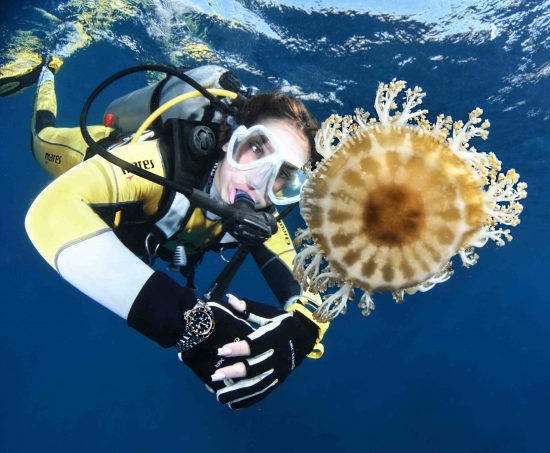
New underwater observatory to monitor zooplankton
by Herbert - 10th December 2016
Scientists from the Thünen Institute of Sea Fisheries, Alfred Wegener Institute (AWI) and Helmholtz-Zentrum Geesthacht (HZG) have placed an optical-acoustic…

Two-thirds of zooplankton at tropical coral reefs lost to ocean acidification
by Herbert - 24th September 2016
Ocean acidification can fundamentally change the structure of the reef Tropical coral reefs can lose up to two-thirds of their…

Hanifaru Bay: In a flying vortex
by Franco and Sabrina - 10th October 2023
Are you looking to be enveloped in a flying vortex of Mantas? Get ready, it doesn't happen often. Have you ever…

Goldfish of the Red Sea
by Ivana and Janez - 2nd May 2023
Every diver who's been to the Red Sea must have a picture with the Pseudanthias squamipinnis – Sea goldies. A very common…

Looking at life from a Cassiopea’s perspective – Upside down
by Ivana and Janez - 20th December 2022
Upside-Down Jellyfish live resting on the sea floor, making them look like they are upside-down. They are found in coastal waters,…

Crinoids – Flowers of the reef
by Franco and Sabrina - 14th June 2021
One of the things that struck me most during the first dives I made in Papua New Guinea, and especially the…

Sea Anemones
by Ivana and Janez - 4th May 2020
Sea anemones are a group of marine animals that are predatory in nature and are closely related to jellyfish and…

Valdés – Patagonien, Argentinien
by Robert - 3rd July 2019
>> VIDEO << Das UNESCO-Welterbe mit kargen Landschaften und blühendem Leben Die argentinische Halbinsel Valdés liegt direkt am Atlantik in…

Mantas – the gentle giants of the seas
by Ivana and Janez - 7th February 2018
Manta rays – the diver's dream. Belonging to the family Mobulidae, there are two species of Manta Ray often seen…

The Myth of the Jellyfish
by Mares - 1st September 2017
When I asked my child what jellyfish were, she said they are half fish, half jelly… Well nothing could be…

Copepods rise and shine to internal genetic clocks
by Herbert - 7th August 2017
The Calanus finmarchicus is a copepod that packs a big punch. Although just two to four millimetres, this zooplankton’s genetic…

Haliphron atlanticus: Deep-sea octopus feeds on jellyfish
by Herbert - 30th March 2017
Octopus then uses tentacles of jellyfish to defend itself The open ocean is the largest habitat on Earth. Within this…

Greenpeace reports on research on microplastics in seafood
by Mares - 6th October 2016
Microplastics can accumulate in the food chain “In the environment, microplastics act like a foreign body with toxins. It contains…

Proportion of unicellular plankton much higher than previously thought
by Mares - 29th April 2016
Unicellular planktonic organisms play a more important role in the marine ecosystem than previously thought. This was the conclusion drawn…























